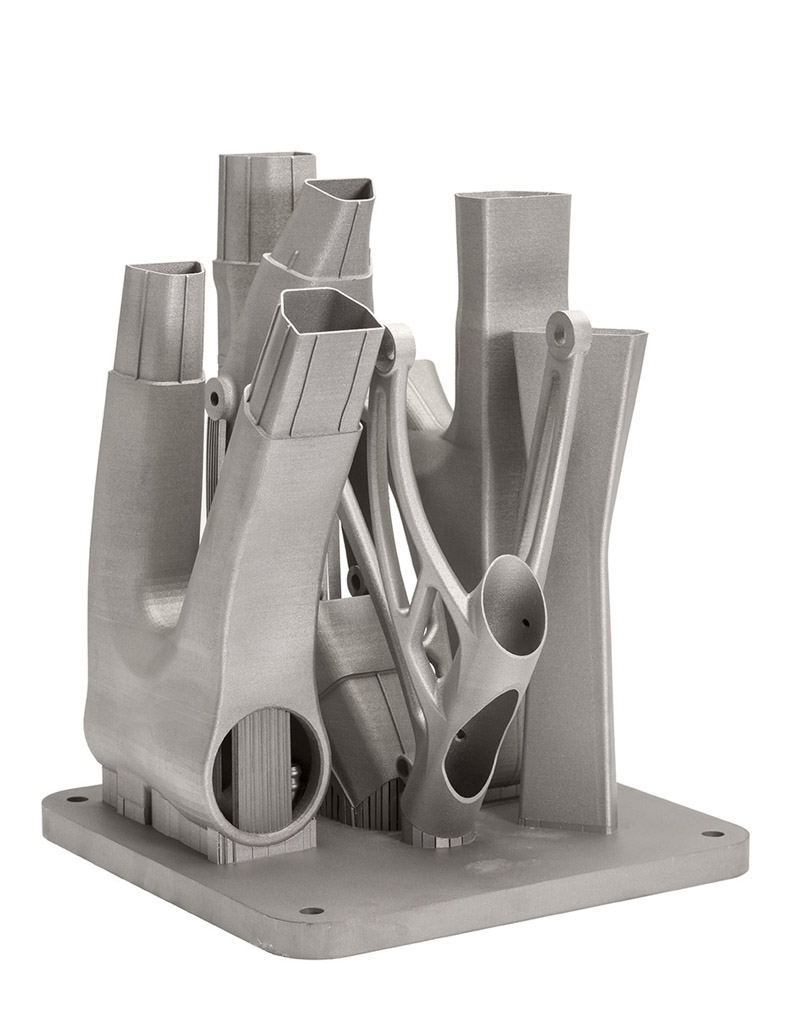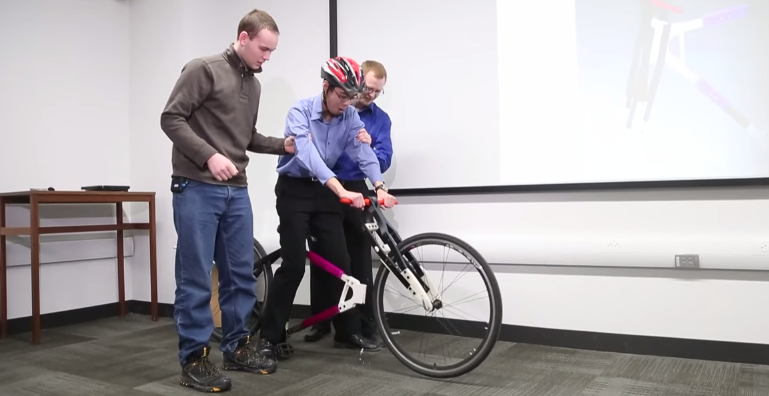
3D printing is a manufacturing process that lets a designer “grow” complex structures that could be impossible to mill or cast. The first 3D bike rolled off a printer a couple years ago.

Flying Machine Studios, based in Australia, has taken a hybrid approach with its F1 commuter bike. Brazing the brave new world of 3D printed lugs with off-the-shelf titanium tubing, the F1 enables a bike with personalized geometry.

The bike isn’t entirely 3D-printed — just the lugs that connect the titanium tubing. By adjusting angles and lengths of the lugs that link the tubes, the frame can be easily tweaked to make the bike fit any body type.

This is far from the first bike to use 3D printing. Empire Cycles built the first fully-printed frame, the MX6-R, last year.

The printed parts were bonded together using an aerospace-grade epoxy. The MX6-R frame is 33% lighter and six times stronger than its aluminum counterpart. The catch? Empire’s prototype costs a staggering $30,000.

With titanium tubes, customization, and good parts, the F1 isn’t going to be a cheap bike. Other models from the company start around $4,000, and the company says the F1 starts at about $3,500 for a frame, fork, painting, and small parts. The drive, wheels, handlebars and so on will bump up the price.
The Australian company will ship internationally, so if you’re interested get in touch for specifics about fitting (and to get on the wait list).
Perhaps the future looks even less expensive and more user friendly. Titanium (read expensive) is a material of choice thanks to a high strength-to-weight ratio and low reflectivity.
Aluminum’s polished surface reflects the laser energy required to bond the powder used in the manufacturing process, but some companies are already dabbling in printable resins.

One example is James Novak’s wild design (top image in this article). The experimental fixie is a remarkable look at the possibilities 3D printing opens to engineers.
Regardless of the materials used, we expect to see this technology evolve and become more and more accessible to the masses.
While technology rushes forward, it’s important to remember that 3D printing is still a new process that is experiencing growing pains.
A printed bike by a team of second-year engineering students at Carleton University failed miserably in front of the press as they attempted to demonstrate the bicycle.

We haven’t seen this technology applied to any major U.S. manufacturers yet, but look forward to watching the burgeoning market find its legs.
Charge Cycles has a video of the process using titanium. Check it out below to learn more about this fascinating manufacturing process.





